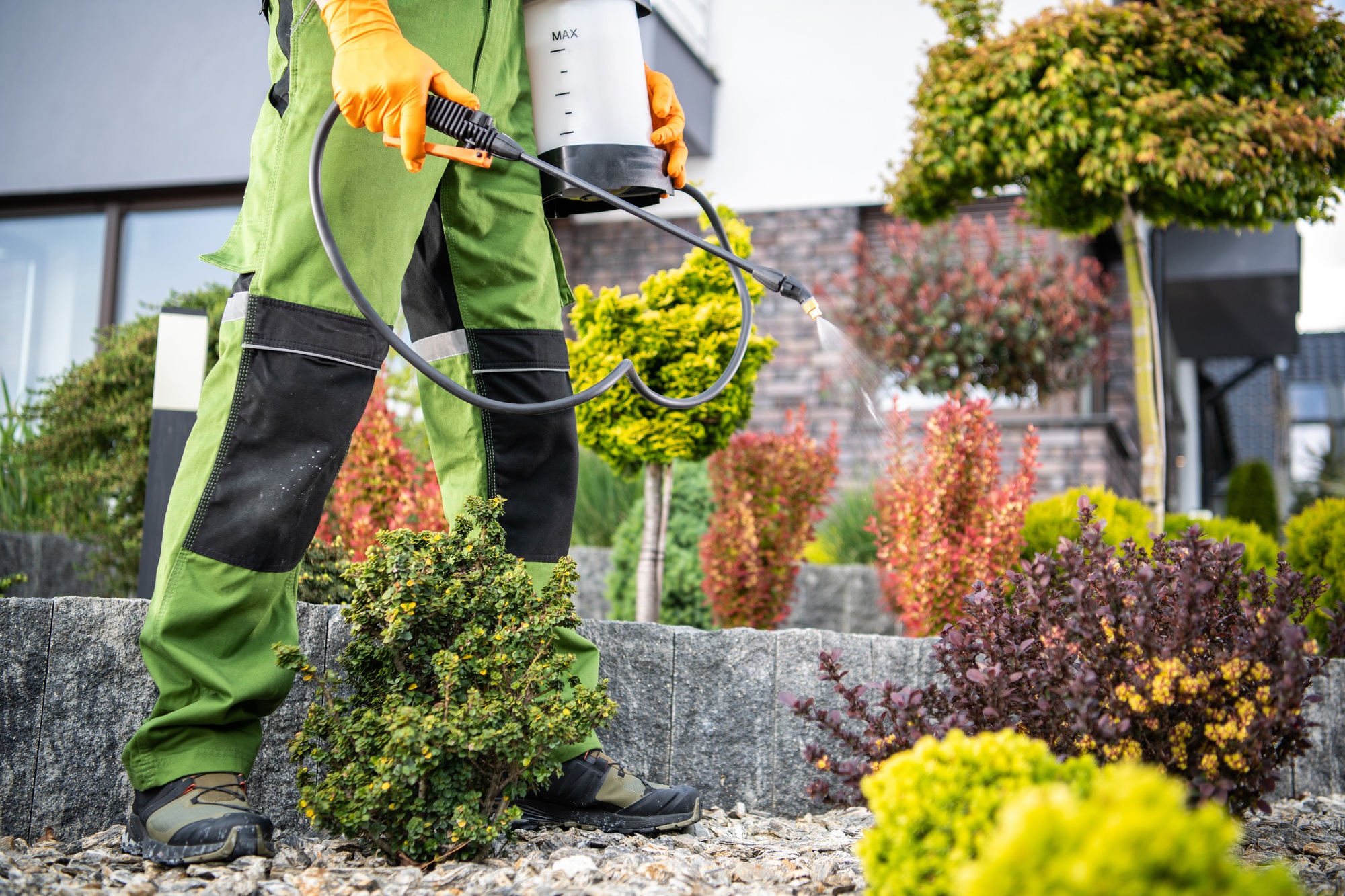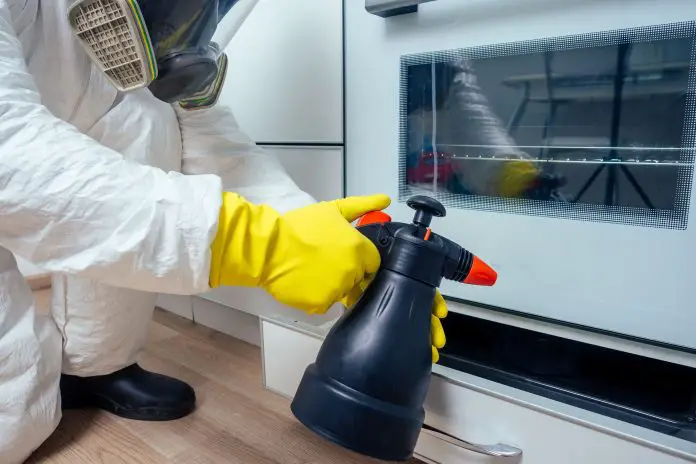Key Takeaways

- Importance of a Business Plan: A well-structured business plan is essential for clarifying goals, securing funding, and navigating the pest control industry effectively.
- Key Components to Include: Your pest control business plan should encompass an executive summary, market analysis, marketing strategy, operational plan, and financial projections.
- Market Analysis: Understand your local market dynamics, target customers, and competitors to effectively tailor your services and stand out.
- Operational Strategy: Focus on service offerings, quality equipment, and efficient operational processes to maximize customer satisfaction and business growth.
- Effective Marketing Techniques: Utilize both online and offline marketing strategies, including SEO, social media engagement, and local partnerships, to enhance visibility and attract clients.
- Financial Planning Essentials: Develop a comprehensive financial strategy that includes budgeting, forecasting, and exploring diverse fundraising options to ensure the sustainability of your pest control business.
Starting a pest control business can be a lucrative venture, especially with the growing demand for effective pest management solutions. Whether you’re a seasoned professional or just diving into the industry, having a solid business plan is crucial for your success. It not only helps you outline your goals but also guides you through the complex landscape of regulations, marketing, and customer service.
In this article, you’ll discover the essential components of a pest control business plan. From identifying your target market to understanding your competition, you’ll gain insights that can set you apart in a crowded field. Let’s explore how to turn your passion for pest control into a thriving business that meets the needs of your community.
Understanding Pest Control Business Plan

Creating a solid business plan is crucial for your pest control business. It provides a roadmap that guides your strategies for success while addressing challenges and opportunities in the market.
Importance of a Business Plan
A business plan is essential for small business owners looking to start a pest control venture. This plan allows you to clarify your vision, articulate your goals, and outline the steps to achieve them. It also helps secure funding, as investors and lenders often require a comprehensive business plan before committing financial resources. Establishing measurable objectives in your business plan can enhance accountability and track progress, making it easier to adapt as the market changes.
Key Components of a Business Plan
Your pest control business plan should include several key components:
- Executive Summary: Summarize your business concept, main services, and target market. This overview should grab attention and convey your unique selling proposition.
- Market Analysis: Research your local market to identify potential customers and assess your competition. Understanding industry trends and customer needs helps tailor your approach.
- Marketing Strategy: Outline your marketing tactics, such as online advertising, community outreach, and referral programs. A strong marketing plan increases visibility and attracts customers.
- Operational Plan: Describe your day-to-day operations, including service delivery methods, staffing needs, and equipment requirements. Detail processes that ensure service quality and customer satisfaction.
- Financial Projections: Provide realistic financial forecasts to demonstrate potential profitability. Include startup costs, pricing strategies, and break-even analysis to showcase sustainability.
Incorporating these components into your pest control business plan positions you for success and helps navigate the competitive landscape.
Market Analysis

A thorough market analysis is vital for your pest control business plan. It helps you understand the industry dynamics, target customers, and competitors, ultimately shaping your business strategy.
Industry Overview
The pest control market is showing substantial growth, fueled by rising urbanization, heightened health awareness concerning pest-related diseases, and the influences of globalization and climate change. In the U.S., the pest control market is projected to reach USD 18.94 billion by 2031, with a compound annual growth rate (CAGR) of 5.10% from 2024 to 2031. Understanding these industry trends will help you position your small business for success.
Identifying Target Customers
Identifying your target customers is crucial for tailoring your services effectively. You might focus on residential clients, especially homeowners or renters dealing with pest issues. Alternatively, you could target commercial clients, including restaurants and offices that require regular pest control services. Segmenting your market further by demographics or geographic areas can enhance your outreach efforts and service offerings.
Competitor Analysis
Analyzing your competitors provides insight into the market landscape. Research local pest control companies to evaluate their pricing strategies, service offerings, and customer feedback. Observing industry leaders can highlight best practices you may want to emulate and reveal gaps in the market that your small business could fill. Keep track of competitors’ innovations in eco-friendly and technology-driven products. This knowledge will strengthen your business plan and improve your competitive positioning.
Operational Strategy

An effective operational strategy is pivotal for your pest control business plan. Focused operational elements maximize efficiency and customer satisfaction, ensuring long-term success and growth for your small business.
Service Offerings
Your service offerings must reflect the specific needs of your target market. Consider an array of pest control services, including:
- Residential Pest Control: Tailored services for homeowners addressing common pests such as ants, roaches, and rodents.
- Commercial Pest Control: Customized solutions for businesses that prioritize a pest-free environment to protect their reputation and adhere to health regulations.
- Preventive Services: Regular inspections and maintenance treatments that help clients avoid future infestations.
Utilizing Integrated Pest Management (IPM) approaches will enhance your service portfolio. IPM combines various pest control methods, prioritizing safety and effectiveness, thus improving customer trust and satisfaction.
Equipment and Supplies
Investing in quality equipment and supplies is essential for operational success. Key items include:
- Pest Control Products: Use environmentally friendly options that align with IPM strategies. Examples include baits, traps, and organic pesticides.
- Protective Gear: Ensure your team has access to protective clothing, gloves, and masks to maintain safety standards during service.
- Service Vehicles: Reliable transportation is crucial for efficient service delivery. Consider trucks equipped for storage of tools and products.
Choosing the right equipment and supplies supports effective execution of your pest control services. Proper management of these resources is vital for running a successful small business in the competitive pest control industry.
Marketing Strategies

Effective marketing strategies are crucial for growing your pest control business. Implementing both online and offline marketing techniques allows you to reach a wider audience and establish a strong presence in your market.
Online Marketing Techniques
Utilizing online marketing techniques enhances your visibility and attracts potential customers.
- Website Development: Create a user-friendly website showcasing your services, prices, and contact information for easy access.
- Search Engine Optimization (SEO): Optimize your website’s content with relevant keywords, improving search engine rankings and attracting organic traffic.
- Social Media Marketing: Engage with customers on platforms like Facebook and Instagram, sharing pest control tips, success stories, and promotions to build a community.
- Email Marketing: Develop an email list to send promotions, newsletters, and informative content, keeping your brand top-of-mind among your audience.
Networking and Partnerships
Networking and partnerships play a significant role in expanding your reach and establishing credibility.
- Local Business Partnerships: Form alliances with local businesses, such as realty companies or home improvement stores. These partnerships can lead to referral opportunities.
- Industry Associations: Join pest control associations to connect with other professionals, share insights, and enhance your business’s reputation.
- Community Events: Participate in or sponsor local events, increasing brand visibility while demonstrating your commitment to the community.
Engaging in these marketing strategies not only strengthens your pest control business but also aligns with your overall business plan, ensuring long-term growth and success.
Financial Planning

Financial planning forms the backbone of a successful pest control business plan. It enables you to manage your resources effectively, ensuring sustainability and growth in a competitive market. Focus on developing a comprehensive financial strategy that includes budgeting, forecasting, and exploring fundraising options.
Budgeting and Forecasting
Budgeting and forecasting involve estimating your income and expenses, allowing you to allocate resources efficiently. Create a detailed budget that outlines your expected monthly costs, including equipment, labor, marketing, and operational expenses. Anticipate variations in income due to seasonal demand changes in pest control services. For example, revenue may spike in warmer months when pests are more active, while costs might remain consistent year-round due to overhead. Regularly update your forecasts based on actual figures to maintain financial control and make informed business decisions.
Fundraising Options
Fundraising options are vital for launching and growing your pest control business. Explore various avenues like small business loans, investor partnerships, and crowdfunding platforms. Small business loans provide capital for initial investments, while investors can offer both funding and expertise. Crowdfunding allows you to present your business plan to a wider audience, gaining financial support from individuals passionate about your mission. Research each option thoroughly, assessing their benefits and risks, to select the best approach for your financial needs. Always include a solid financial outline in your business plan to attract potential investors and lenders, demonstrating how funds will contribute to your success.
Conclusion

Starting a pest control business can be a rewarding venture with the right approach. By crafting a detailed business plan that incorporates market analysis operational strategies and effective marketing techniques you set the stage for success. Understanding your target audience and competition is vital for tailoring your services and standing out in the industry.
Investing in quality equipment and environmentally friendly practices not only enhances service delivery but also builds trust with your customers. Remember that financial planning is crucial for sustainable growth. With a solid foundation you can navigate the challenges of the pest control market and establish a thriving business that meets community needs. Embrace the journey and watch your passion turn into a successful enterprise.
Frequently Asked Questions
What is the potential profitability of starting a pest control business?
Starting a pest control business can be highly profitable due to increasing demand for pest management solutions. As urbanization grows and health awareness increases, the market is projected to reach USD 18.94 billion by 2031, creating ample opportunities for new entrepreneurs.
Why is a business plan important for a pest control business?
A business plan serves as a roadmap for entrepreneurs in the pest control industry. It clarifies your vision, goals, and steps for achieving them. Additionally, a well-structured plan helps secure funding and enhances accountability through measurable objectives.
What are the key components of a pest control business plan?
Essential components include an executive summary, market analysis, marketing strategy, operational plan, and financial projections. These elements guide your business direction, ensure competitive positioning, and help attract potential investors.
How can I conduct market analysis for my pest control business?
Conduct market analysis by identifying target customers, whether residential or commercial, and researching local competitors. Analyze their strategies and services to understand market dynamics and find opportunities for your pest control offerings.
What marketing strategies should I implement for my pest control business?
Adopt both online and offline marketing techniques, such as SEO, social media marketing, and community networking. Engaging in partnerships with local businesses and attending community events can also enhance visibility and credibility for your pest control services.
How important is financial planning for a pest control business?
Financial planning is crucial for success. It includes budgeting, forecasting income and expenses, and exploring fundraising options like loans or crowdfunding. A solid financial strategy attracts investors and lenders, demonstrating your business’s potential for growth.
Image Via Envato: valeriygoncharukphoto, yurakrasil, duallogic, LightFieldStudios, sedrik2007, afihermatova, DragonImages



